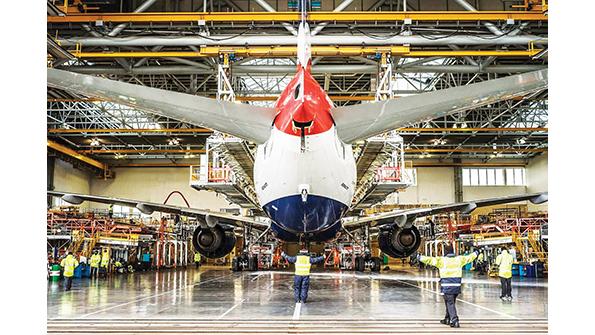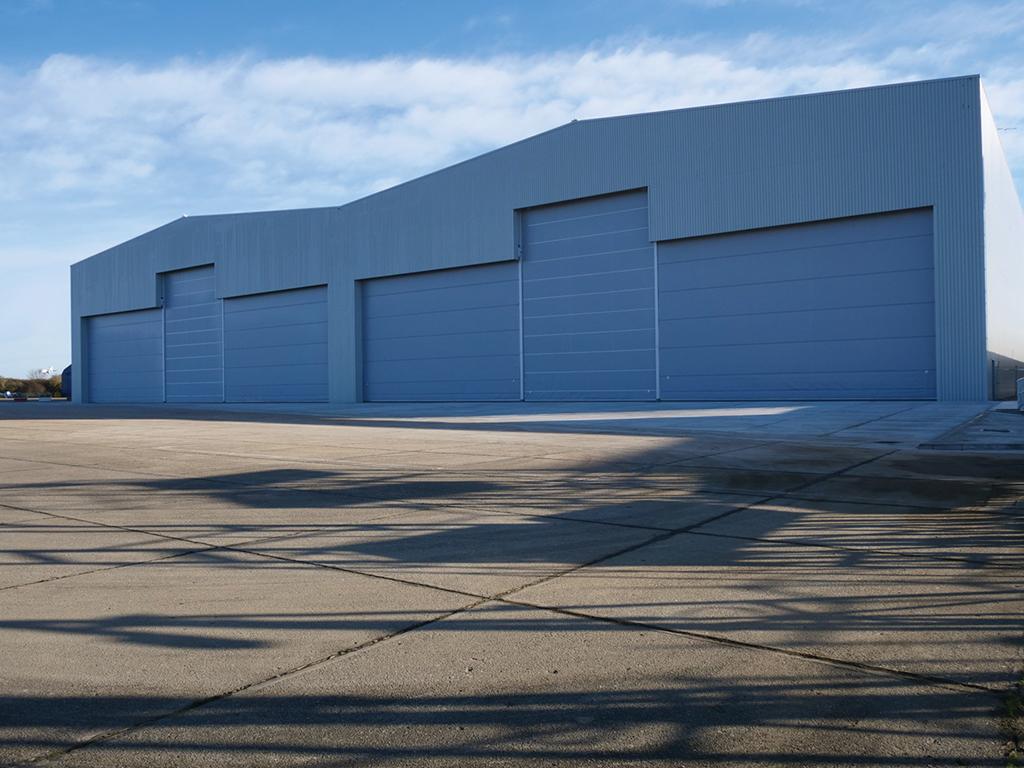
Fleet Changes, Airline Maintenance
The COVID-19 crisis saw changes to the fleets of some of the UK’s legacy airlines, particularly those operating widebody aircraft. British Airways, the country’s flag carrier, accelerated retirements of its 12-strong Boeing 747 fleet. Originally due to be phased out by 2024, the airline sent the aircraft into long-term storage before teardowns were undertaken by shops such as eCube Solutions at Castellon Airport, Spain.
However, the carrier intends to buck the European trend for retiring the Airbus A380—a step taken during the crisis by Lufthansa and Air France—keeping the aircraft in service. At the height of the crisis, the airline cut nearly 1,000 engineering jobs in its British Airways Engineering business.
Also saying goodbye to the 747 was Virgin Atlantic, which removed seven of the aircraft from its fleet last year along with the accelerated retirement of its Airbus A340-600s. While furloughs and job cuts were common across most airlines, Virgin Atlantic went further and ceased all operation at London Gatwick Airport, where it also operated a line maintenance facility. The airline confirmed that the maintenance would be consolidated into its London Heathrow Airport operation.
Low-cost carrier EasyJet, which operates the UK’s largest commercial aircraft fleet, has also made efforts to streamline its maintenance costs. The airline revealed “significant progress” on reducing its engineering costs during the six months ended March 31, undertaking moves such as insourcing some of its line maintenance work. For its heavy maintenance, much of which is outsourced to third-party providers, EasyJet sought cost savings, extending contracts for existing work packages and working with manufacturer Airbus on efficiency gains related to six-year and 12-year checks on its A320-family fleet.
These strategic adjustments at UK airlines have led to changes in their maintenance requirements. “Some airlines are looking for compelling solutions to keep their current fleet while others are scouring the market for opportunities on the secondary market,” says Maximo Gainza, head of commercial strategy at AerFin, who says the company has seen an increase in leads and contract wins in areas such as long-term component support.
MRO Diversification and Capacity Adjustments
Even though the number of passengers traveling through UK airports fell by 223 million last year—a decline of 75%—with many aircraft being placed into long-term storage, some MROs still saw opportunities to add capacity.
Storm Aviation, the line maintenance specialist headquartered at London Luton Airport, expanded its network of UK line stations. In December 2020, it acquired the existing UK network of Swiss MRO provider SR Technics at London Heathrow, London Gatwick, London Stansted, Manchester and Birmingham airports, along with a tooling, loan, repair and calibration center at Stansted.
KLM UK Engineering, based in Norwich in the east of England, also pressed ahead with pre-crisis plans to grow capacity. Early in 2021, the MRO completed construction of a new 54,000-ft.2 facility and adjacent 15,500-ft.2 workshop at its Norwich Airport base.
For others, reducing capacity was a necessity. These included UK-based MRO provider 2Excel Engineering, which experienced an immediate downturn in airline work, which accounts for a large proportion of its overall business. Flexibility, often cited as a key requirement for independent MROs, remains essential. “From a people perspective, we have structured ourselves to be able to double capacity within a week,” says Chris Norton, the company’s CEO. “That is much more capacity than we are being asked for, so we can scale up quickly.”
Another key trend of the crisis has been MRO providers diversifying their capabilities to meet the realities of the altered landscape. This played out in the same fashion in the UK, with independents specifically looking at new revenue streams apart from commercial airline maintenance. The past year saw UK independent MRO provider Caerdav move into the cargo conversion market while AerFin added new engine MRO services centered on GE Aviation CF34-8, CFM International CFM56-5 and -7 and Rolls-Royce RB211-524 platforms.
STS Aviation Services concluded a five-year contract with the Royal Air Force for maintenance on its future fleet of five Boeing737NG-based E-7A Wedgetail surveillance aircraft. This move turned the mix at its previously all-commercial Birmingham facility into a 50-50 commercial/defense split.
2Excel Engineering looked at MRO diversification at its Lasham, England, base as a means of riding out a turbulent period. “We increased our focus on the lessor market in order to make up for the drop-off in airline operator activity,” says Norton. “At the peak, we had 30 aircraft at Lasham in storage, with deep maintenance checks held in abeyance until onward customers were found. Today we have only 12, so it is obvious the market is moving again.”
This led to the company implementing a reconfiguration plan, which it completed in November last year. “We managed to save 165 out of 197 permanent jobs and created new terms of reference for each one,” Norton says. He predicts another difficult year in 2021 but is confident that next year will show signs of recovery.
M&A and Partnerships
A long-term consequence of the pandemic is the possibility of increased merger and acquisition prospects. While M&A activity has yet to play out in the UK as expected, the twin threats of Brexit and COVID-19 seemingly are not deterring investment from overseas.
Before the COVID-19 crisis, U.S.-based STS Aviation Group acquired two UK sites in the final quarter of 2019 as a means of expanding its European footprint. The first was at the former Monarch Aircraft Engineering facility in Birmingham and the second was Apple Aviation’s Newquay hangar.
“The UK is home to a very large collection of component OEMs, and expanding into Europe was a natural step after having acquired Aviation Services International in Shannon, Ireland,” says Mick Adams, senior vice president and CEO of STS Aviation Services. He expects the acquisition of the business in Ireland, a European Union member state, will also help mitigate any risks associated with Brexit.
During the crisis, Dublin Aerospace acquired the assets of Flybe Aviation Services, the MRO affiliate of defunct airline Flybe. On acquiring the company from administrators EY in October 2021, the operation was renamed Exeter Aerospace, which will continue its predecessor’s focus on Embraer 170/190 regional jets, Bombardier Dash 8/Q400 and ATR 72 turboprop families with services including base maintenance, APU and landing gear overhauls.
More cooperation, perhaps in the form of partnerships and alliances, also could be on the horizon. In the UK, AJW Group announced a joint venture with U.S. investment firm Arena Investors in June 2021, which will focus on acquisitions of commercial aircraft, engines and components. Operating from Dublin, Ireland, it will be funded with committed capital of up to $100 million, with Arena serving as the majority investor and AJW taking a minority stake.
While primarily focusing on current-generation narrowbody engine types such as the CFM56-5B, CFM56-7B and IAE V2500, it will also look “opportunistically” at other engine types such as the RB211, GE Aviation CF6 and GE90, according to Ian Malin, AJW’s chief financial officer.
“The same will apply to airframes—we will focus on the highest-demand components for current-generation Airbus A320 and Boeing 737 families with selected opportunities in newer-generation assets on a case-by-case basis,” Malin says. “In addition to hard asset investing, the joint venture will look at secured loans, equity investment and certain M&A activity in the aftermarket space.”
The Fortunes of Rolls-Royce
Rolls-Royce, seen as one of the jewels in UK’s aerospace crown, has endured a particularly difficult 18 months owing to COVID-19’s impact on the widebody engine market, which has seen a fall in orders and a hit to aftermarket services revenues, which account for around half of the company’s revenues. The recovery in the large-engines segment is expected to be more gradual in comparison to its narrowbody counterparts.
Speaking during an April 2021 Aviation Week webinar, Romain Chambard, vice president for civil aerospace marketing at Rolls-Royce, said in 2020 the work hours expended in its long-term agreements were roughly 43% of the 2019 level as a baseline. “We are anticipating 55% for 2021 and then 80% for the year after, and we expect to come back to 2019 levels by 2024,” he said.

Progress was made in July of this year with the formal announcement of the company’s aftermarket competitiveness agreement with the International Air Transport Association. The terms are based on four pillars, including: The OEM will not prevent the development of alternative parts or repairs; it will sell its parts on a non-discriminatory basis; it will not penalize customers that use alternative parts and repairs; and it will not force customers to buy its aftermarket services.
A UK Aircraft Retirement Wave?
Aviation Week’s Commercial Fleet and MRO Forecast data has predicted 26 retirements of UK aircraft this year. But with the accelerated retirements from major carriers such as British Airways and Virgin Atlantic, the industry is left to ponder whether there will be a wave of aircraft exiting the fleet over the next few years. Not so, says AerFin’s Gainza: “Much of the retirement activity in the UK has already concluded.
However, as part of the retirement curve, he is noticing other trends: “Operators are becoming extremely cost-conscious when it comes to the last or penultimate maintenance event—particularly on widebody aircraft. Additionally, in this leaner environment we are seeing asset managers becoming increasingly involved in sunset phase-outs and reduce-to-produce [teardown] programs.”
Nevertheless, Gainza’s AerFin colleague James Bennett, the company’s commercial director, is seeing healthy teardown demand in the UK market—“especially with airlines choosing to induct surplus engines for disassembly so they can recall parts to support their own maintenance strategies or generate revenue through an experienced asset manager’s customer network,” he says. “Additionally, we are also starting to see entities use third-party disassembly managers such as ourselves as they prepare for the ramp-up in [used serviceable material] demand as we head into 2022.”




